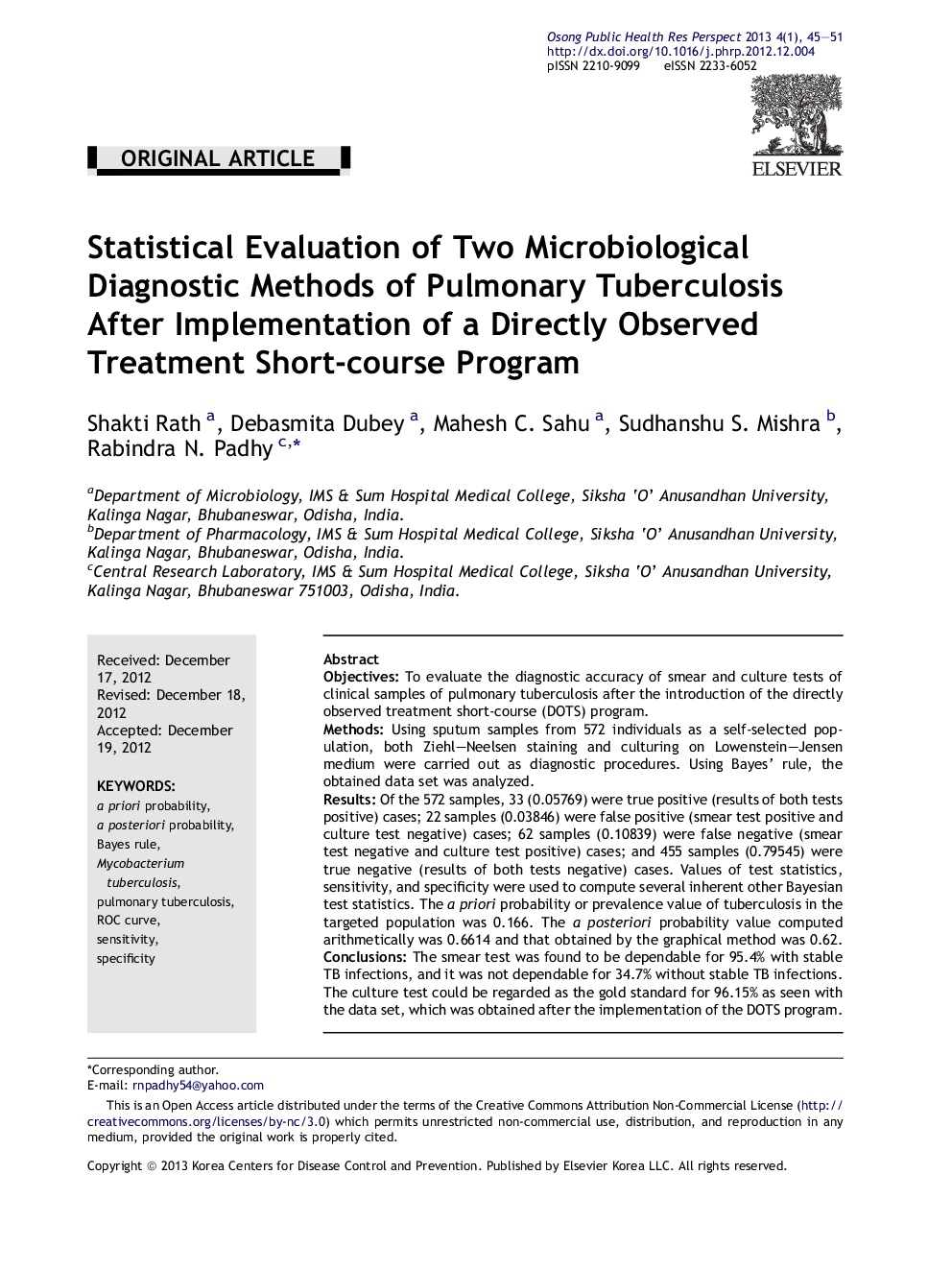| Article ID | Journal | Published Year | Pages | File Type |
|---|---|---|---|---|
| 4202107 | Osong Public Health and Research Perspectives | 2013 | 7 Pages |
ObjectivesTo evaluate the diagnostic accuracy of smear and culture tests of clinical samples of pulmonary tuberculosis after the introduction of the directly observed treatment short-course (DOTS) program.MethodsUsing sputum samples from 572 individuals as a self-selected population, both Ziehl–Neelsen staining and culturing on Lowenstein–Jensen medium were carried out as diagnostic procedures. Using Bayes' rule, the obtained data set was analyzed.ResultsOf the 572 samples, 33 (0.05769) were true positive (results of both tests positive) cases; 22 samples (0.03846) were false positive (smear test positive and culture test negative) cases; 62 samples (0.10839) were false negative (smear test negative and culture test positive) cases; and 455 samples (0.79545) were true negative (results of both tests negative) cases. Values of test statistics, sensitivity, and specificity were used to compute several inherent other Bayesian test statistics. The a priori probability or prevalence value of tuberculosis in the targeted population was 0.166. The a posteriori probability value computed arithmetically was 0.6614 and that obtained by the graphical method was 0.62.ConclusionsThe smear test was found to be dependable for 95.4% with stable TB infections, and it was not dependable for 34.7% without stable TB infections. The culture test could be regarded as the gold standard for 96.15% as seen with the data set, which was obtained after the implementation of the DOTS program.
